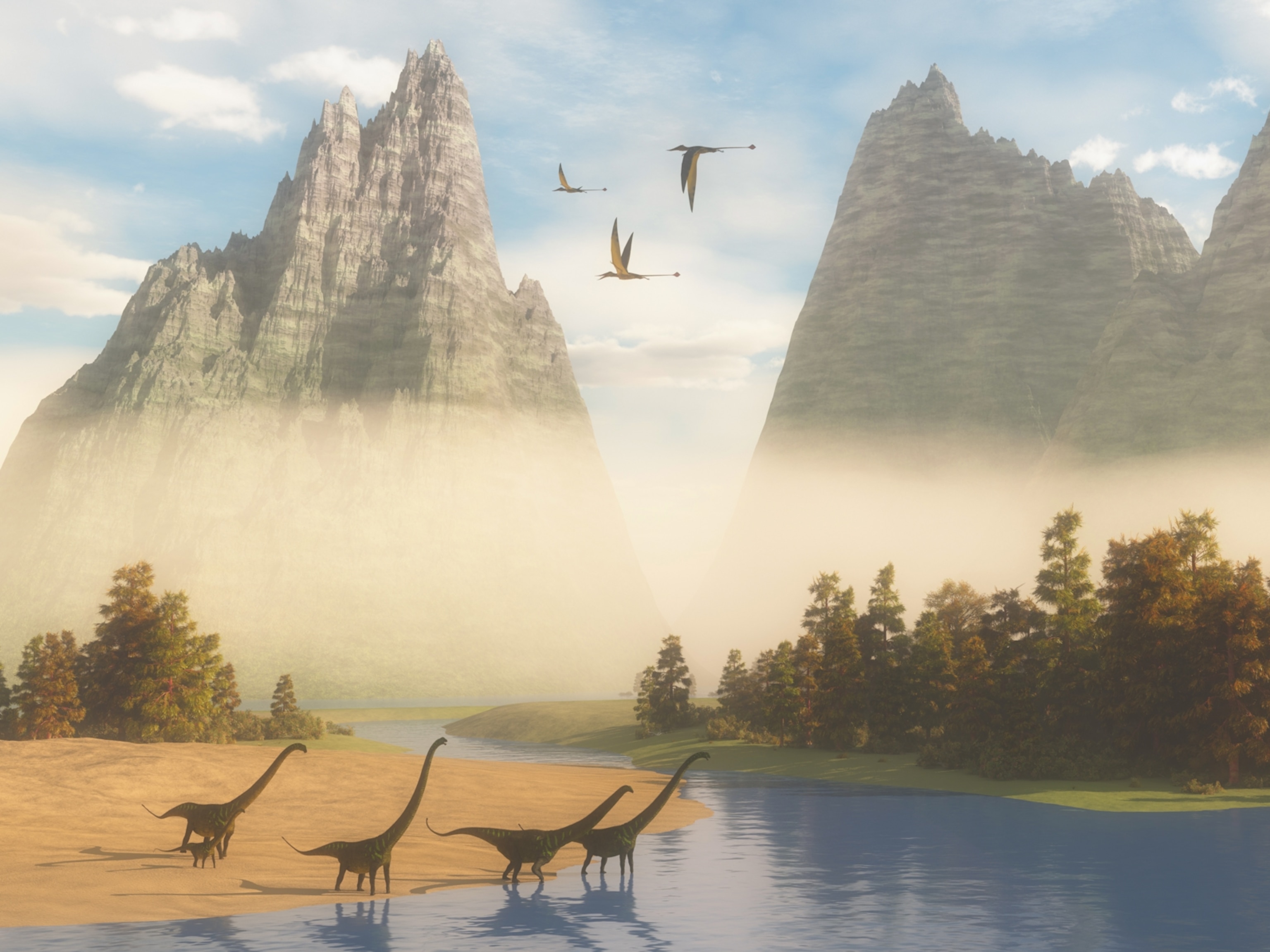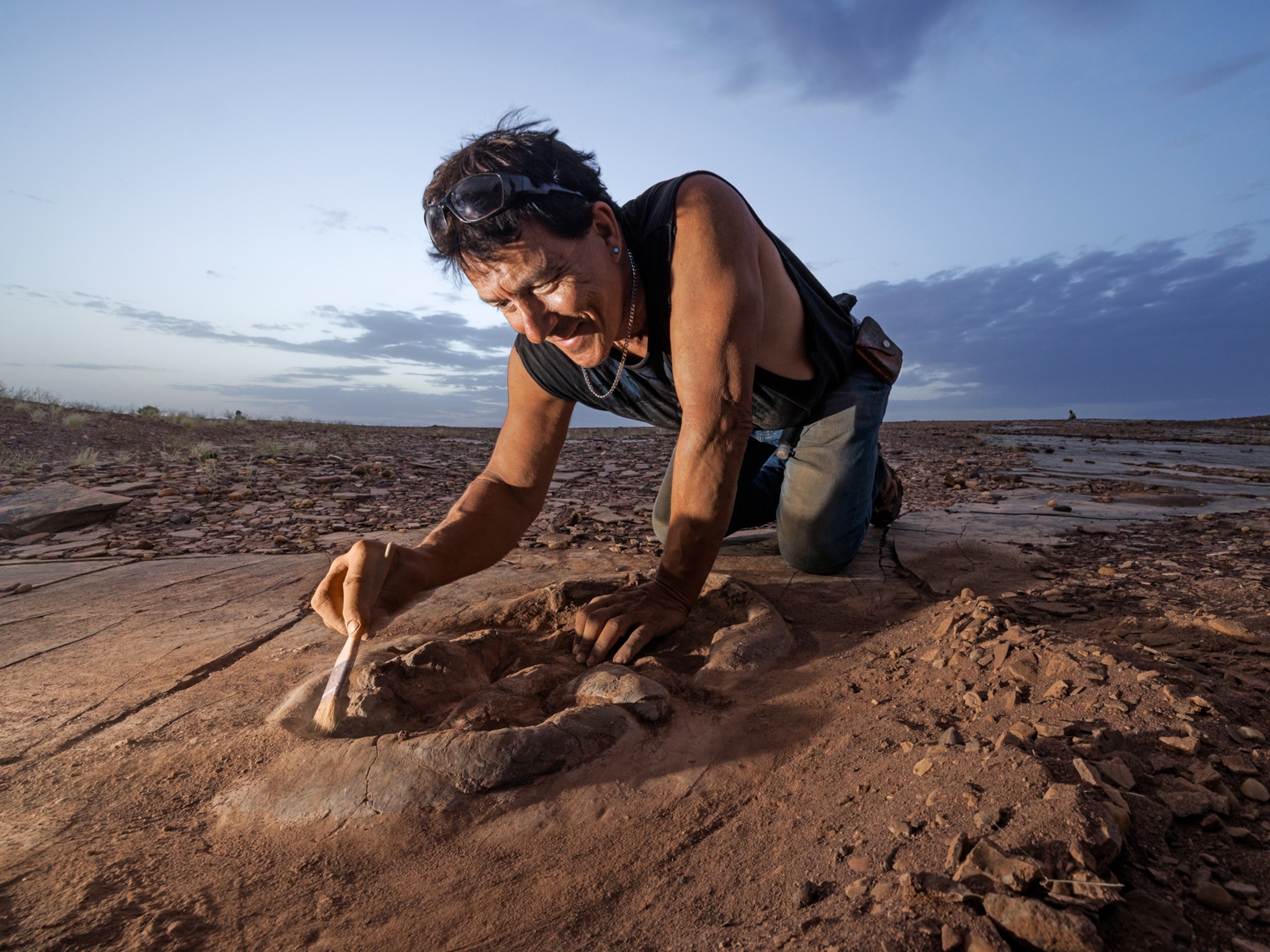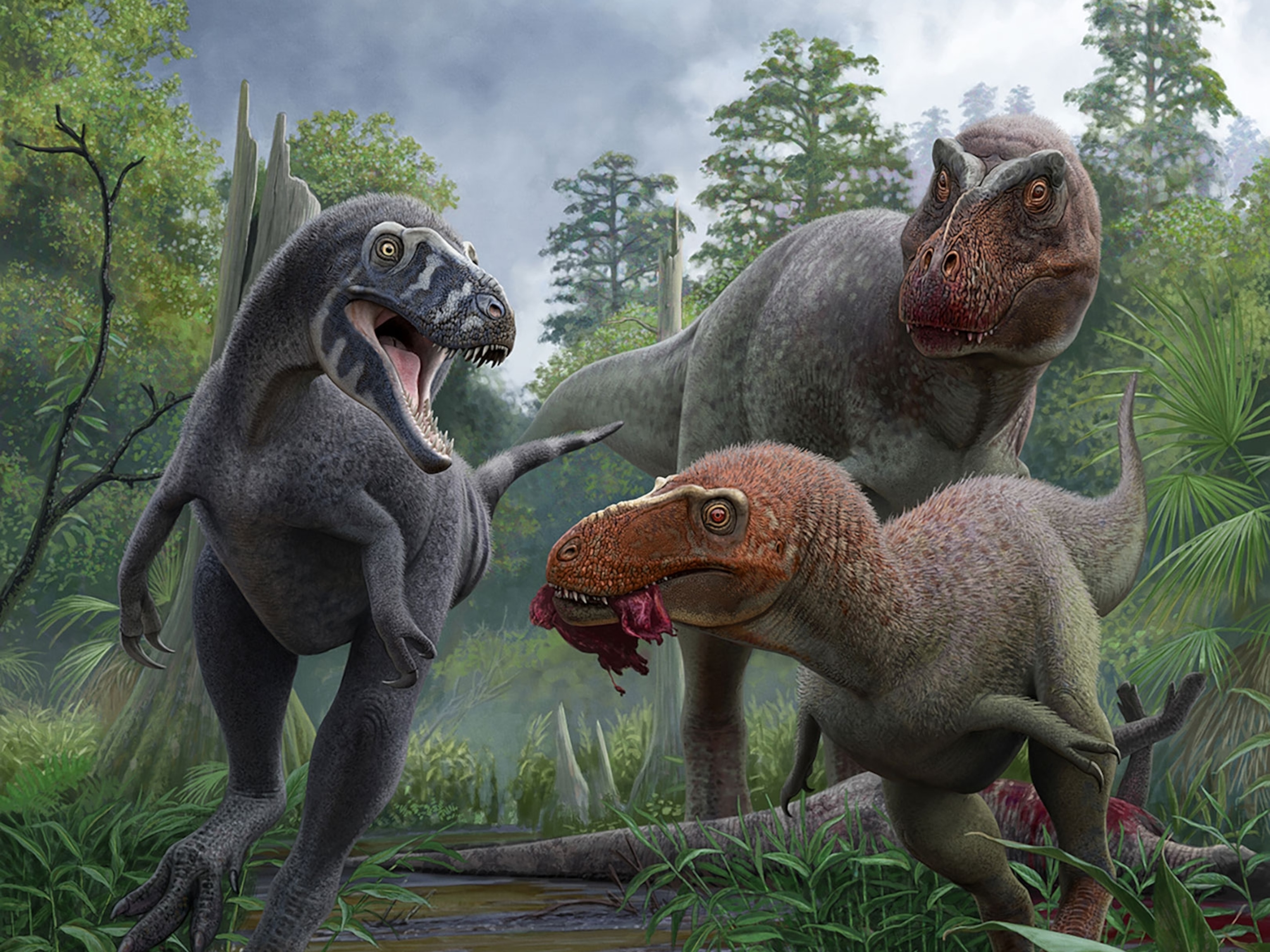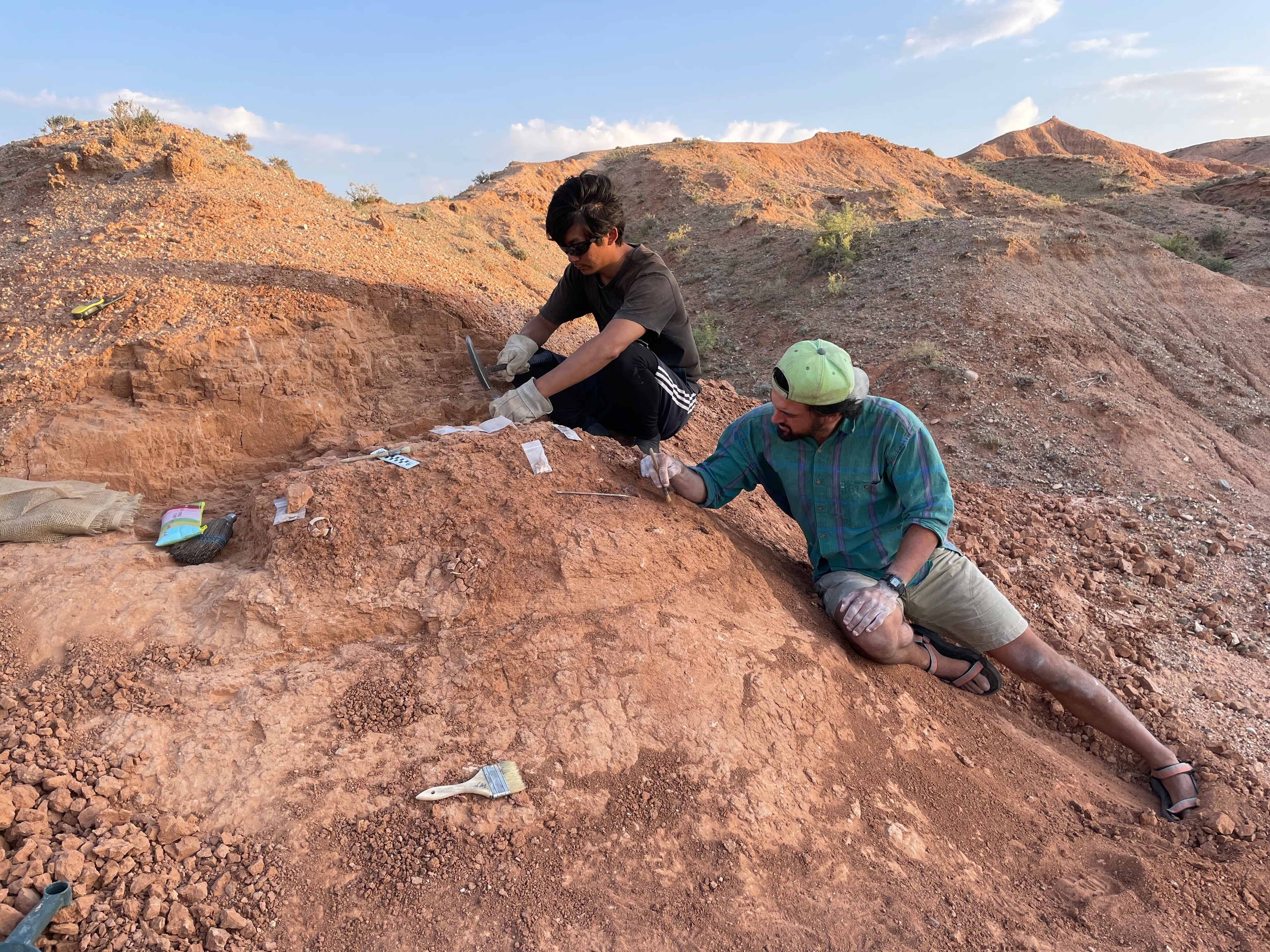The Paleozoic era's Silurian period saw animals and plants finally emerge on land. But first there was a period of biological regrouping following the disastrous climax to the Ordovician.
A Diverse World
The recovery soon got under way in the oceans as climbing temperatures and rising sea levels reproduced the shallow, marine environments of earlier times. Huge reef systems flourished in the clear, tropical seas—evident today in the many limestone rock formations that date to this period. Previous reef-builders such as bryozoans were joined by corals and prehistoric sponges known as stromatoporoids, which formed a hard outer skeleton. They survived solely by eating microscopic animals trapped by their stinging tentacles.
The growth of corals and other marine organisms was stoked by oceans teeming with tiny planktonic creatures. Waiting at the other end of the food chain were the fearsome eurypterids, or sea scorpions. Some species grew to more than six feet (two meters) in length and are considered the largest arthropods ever to have lived. Bearing a resemblance to their scorpion descendents, eurypterids had a pair of huge, compound eyes for searching out primitive fish, which they grabbed with their powerful, clawlike pincers.
Fish were now diversifying and extending their feeding options beyond simply vacuuming meals off the seabed. A group called acanthodians, or spiny sharks, evolved more menacing mouths with jaws. While these fish, the first true jawed fish, reached no great size during the Silurian, they were on their way to becoming one of the planet's top predators.
Creepy-crawlies also began to appear on land. Starting off small, they measured no more than a few centimeters long. These terrestrial pioneers were arthropods, such as primitive centipedes and arachnids, the ancestors of spiders.
First True Plants
The first true plants began to take root on land some 430 million years ago. They evolved rigid stems, enabling them to stand upright, and the tubular tissues common to all vascular plants that allowed the transport of water and nutrients. These first colonizers lacked leaves, but mosses and other plants followed, providing a thin layer of waterside vegetation that encouraged more aquatic animals to make the transition to land.
The climate remained warm and stable throughout most of the Silurian. The supercontinent of Gondwana was still positioned over the South Pole but the vast icecaps of the late Ordovician period melted almost to nothing. Sediments formed from massive quantities of broken shells suggest violent storms were triggered by the warmth of tropical oceans.
The Silurian drew to a close with a series of extinction events linked to climate change; however, these were relatively minor compared with those of other geologic periods.






